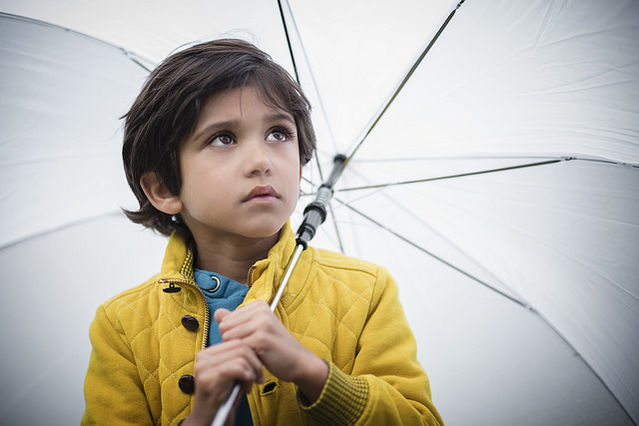Anxiety
A Simple Strategy to Help Worried Kids
How children can use their imaginations to cope with worries.
Posted June 23, 2017 Reviewed by Jessica Schrader

Every worry-prone child I’ve ever worked with has had an exceptionally vivid imagination. These kids are masters at conjuring vivid mental pictures of possible terrible events. Then they fret endlessly, replaying those pictures in their minds, unable to tear their mental eyes away from the imagined potential disaster.
The worry images kids create are scary! So, they try hard not to think them, but that only makes those thoughts pop up more frequently and more intensely.
Some children also think that if anything bad might happen, they have to worry about it. They say, “I can’t stop worrying!” but part of them believes that this worrying is useful and necessary. If they fret constantly, maybe somehow magically they can cause the scary thing not to happen.
Reassurance can make worries grow
Worries are “What if?” thoughts. When children say them aloud, parents tend to respond with reassurance. “Don’t worry. That’s not going to happen.”
Sometimes reassurance helps. Your child might not know something or might not understand something and clearing up the facts or making a plan can ease your child’s concerns.
If reassurance is going to work, it will work right away. But worry-prone kids are rarely satisfied with a quick bit of reassurance.
For anxious kids, reassurance might bring two seconds of relief, but then the worries come back even harder. You can’t guarantee that nothing bad will ever happen, and they can always come up with another, “But what if...?” So they keep asking, and asking, and asking…
Reassurance-seeking can quickly fall into a negative spiral. The more parents say, “It’s fine. Don’t worry!” the more anxious kids demand, “But what if…?”
Using imagination to counter children’s worries
Here’s a simple strategy that may help your worried child let go of scary worry images:
Rather than trying to reassure your child, one coping strategy is to help your child vividly imagine other possibilities. For example, if your child says, “What if everyone makes fun of me because of my haircut?” ask, “What if that doesn’t happen? What would that look like?”
When I’ve done this with children in my practice, they tend to give me a startled blink and a slightly confused expression. It hasn’t occurred to them to imagine anything except terrible disaster!
The key to this strategy is to bring in additional images to counter the scary one. Realistic images will probably work better than overly positive ones.
Sometimes kids need a little help coming up with alternative images. So, in the haircut situation, you might say something like:
- What if they don’t notice your haircut?
- What if they say, "Oh, you got a haircut," but they’re not very interested, so then they just keep doing what they were doing?
- What if they say, "Nice haircut," and then just keep doing what they were doing?
Encourage your child to imagine the nondisastrous possibilities even harder than the disastrous one. Your child’s imagination may contribute to worries, but it can also be a means to quiet those worries. Being able to imagine nondisastrous situations makes the disastrous one seem less likely.
With practice, children can become better at coming up with their own “What if it doesn’t (or didn’t) happen?” scenarios in response to worries.
Managing your own worries
This strategy can also be useful for parents. I worked with a mom once whose son was on a driving trip with some friends and didn’t call her at the scheduled time. The first thought that popped into her head was, “What if he died in a car accident?!?” That would be terrible!
Fortunately, she’d learned the “What if it didn’t happen?” technique, and she vividly imagined him 1) forgetting to charge his cell phone, 2) losing track of time because he was sitting around chatting over lunch with his friends, or 3) making a last-minute decision to do something fun with his friends and accidentally leaving his cell phone behind. These alternative images were all more likely than the car accident, so they helped her manage her anxiety until her son called. Yes, he was fine. Lunch had run long.
Related posts:
________________________________
© Eileen Kennedy-Moore, Ph.D.
Subscribe to monthly email newsletter to be notified about new Growing Friendships blog posts.
Growing Friendships blog posts are for general educational purposes only. You’re welcome to link to this post, but please don’t reproduce it without written permission from the author.




